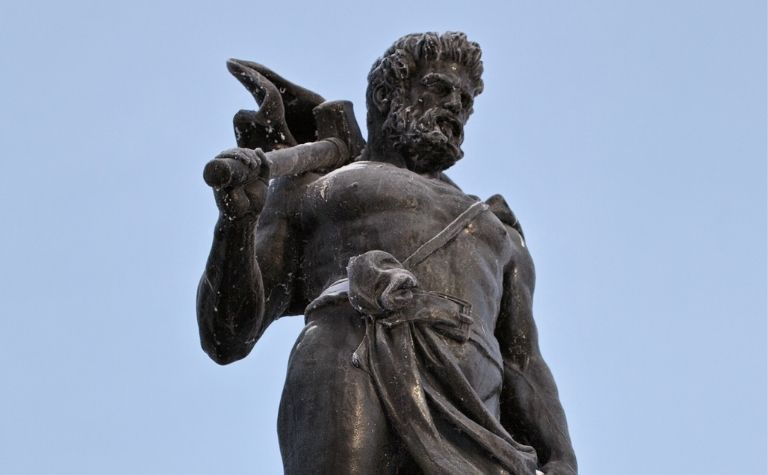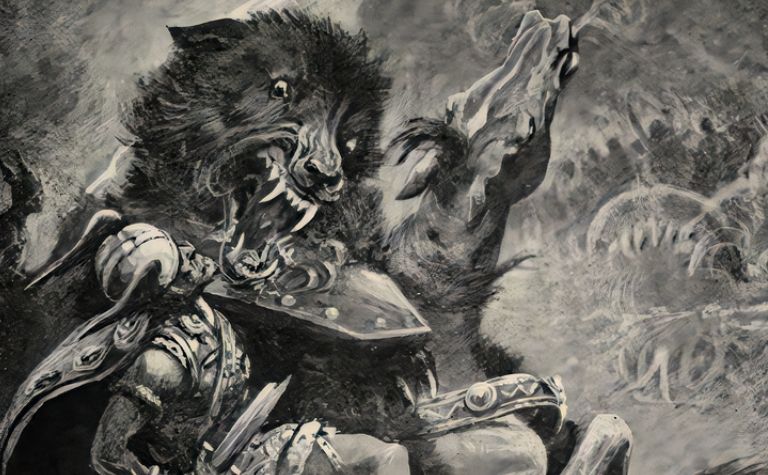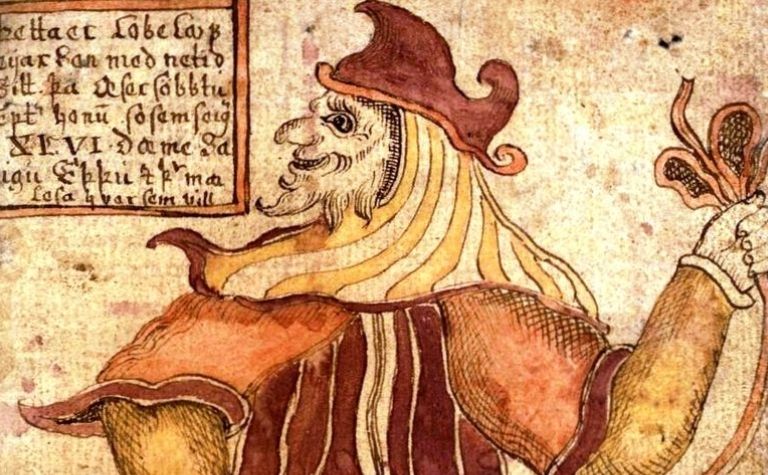According to Norse mythology, Ragnarok is a series of events that will bring the end of the Norse gods and the world as humans know it.
Ragnarok directly translates to “fate of the gods” and, according to mythology, is an event due to happen in the future.
But can Ragnarok be stopped, or is it an inevitable event beyond any human intervention?
In Norse mythology, there is nothing that the gods or humans can do to prevent Ragnarok. The god Odin predicts that Ragnarok will not bring about the end of the world.
Instead, the world will be reborn after the events, in a similar fashion to other polytheistic beliefs such as Hinduism.
This article will examine the causes and events of Ragnarok, including who perishes during the battle and who survives to bring new life back to the world.
It will also explore the duration and events of Ragnarok that lead to the demise of many Norse gods and how they meet their end.
Also, see Why Did Marvel Use Norse Mythology? to learn more.

When Does Ragnarok Happen and Why?
Ragnarok is a future event that can’t be avoided, according to Norse mythology.
According to some, the events that led to the series of conflicts and catastrophes known as Ragnarok have already happened, and the inevitable battle is destined for the future.
Viking legend states that Ragnarok will happen after three freezing winters with no summer in between. [1]
This harsh winter causes massive conflicts amongst giants and the gods. During the long winter, Loki’s sons – a serpent and a giant wolf – break free, causing natural disasters and devastation.
Loki is believed to be primarily responsible for the events that led to Ragnarok. This is due to the first sign of Ragnarok, which has already happened, the death of Baldr.
Baldr was the most beloved son of Odin and Frigg. He was murdered by the blind god Höd after being deceived by Loki.
When the battle of Ragnarok begins, Loki’s sons, the Midgard Serpent and the giant wolf Fenrir, will break free and unleash havoc.
Loki will also escape imprisonment and raise an army of the dead from Hel to seek revenge.
He will fill Naglfar, a boat made of the fingernails of the dead, with the giants and the army of the dead and ride it into Asgard. [2]
The fire giant Surtr will arrive at Asgard and set it alight. Then, beasts and armies will meet to charge upon Asgard and wage an almighty war on the gods.
This, in turn, will bring on the destruction of the world and many of the gods.
Also, see What Is Valhalla in Norse Mythology? to learn more.

How Long Does Ragnarok Last and What Will It Be Like?
The events of Ragnarok will last until the battle between the gods and the giants has come to an end.
The natural disasters that destroyed the world and cosmos will be rebuilt once the sea levels lower and the land returns.
The events of Ragnarok will be a hellish affair full of misery and death.
On Earth, the three long winters will last the span of three years.
Things will become so bleak and desperate that people will revert to an animalistic state, caring only for survival. Fathers will kill their children, and brothers will slay one another over food.
Things will be just as bleak for the gods.
When the giant serpent awakens, it will begin spraying poison into the air and splash its tail, causing the land to be swallowed by the sea.
Meanwhile, the giant wolf Fenrir will sew chaos and destruction. The sun and moon will be swallowed by the wolves who always chase them across the sky, and the stars will fall from the heavens.
Yggdrasil, the great tree supporting all of the cosmos, will be shaken by the events of Ragnarok.
Two humans will seek shelter in Yggdrasil to hide from the tragedy. These humans will later go on to rebuild and repopulate the world.
The result is the end of humanity and many of the gods during fierce battles and natural disasters.
However, the world will be reborn and recreated by the surviving gods and the two humans who survived.
Also, see What Is Valkyrie Symbol in Norse Mythology? to learn more.

Who Survives Ragnarok and Who Doesn’t?
Ragnarok is predicted to be a hellish affair in which many of the gods will meet their demise. Although, the casualties of this conflict also include humankind, dwarves, and even the sun.
The following is a list of who dies during the events of Ragnarok:
- Odin: Eaten by Fenrir
- Fenrir: Killed by Odin’s son, Vidar
- The sun and moon: Swallowed by wolves
- Thor: Poisoned by Jormungandr
- Jormungandr: Slain by Thor
- Fryer: Killed by Sutr
- Surtr: Killed by Freyr
- Heimdallr: Slain by Loki
- Loki: Killed by Heimdallr
- Garm: Killed by Tyr
- All dwarves: Perished from the natural disasters
- All elves: Perished from the natural disasters
- All humans, save two: Perished from the natural disasters
The following is a list of who survives Ragnarok:
- Magni: Thor’s son
- Modi: Thor’s son
- Vidar: Odin’s son, slayer of Fenris
- Baldr: Returns from Hel
- Hod: Returns from Hel
- Hoenir: Will help rebuild the world
- Njord: The father of Freyr and Freya
- Sol: Daughter of Sol, the new sun
- Lif and Lifthrasir: Humans who survive by hiding in a tree [3]
The gods who survive the events of Ragnarok will go on to rebuild the world. The two humans who survive the cataclysmic events, Lif and Lifthrasir, hid during the hardship in what some scholars say is a tree and others say are the woods.
Once the events of Ragnarok end, the two will repopulate the earth.
However, the rebirth part of the legend of Ragnarok has been disputed in the past, with many historians believing that Christian influence may have shifted the story to align with some historians’ beliefs or biases.
Another vital point to consider in the tale of Ragnarok is the absence of many of the female goddesses in the myth.
As their death is not depicted in the story of Ragnarok, many people believe that the goddesses survive the tragic events. The only goddess that indeed dies in Ragnarok is Sol, the sun goddess.
The events of Ragnarok do not necessarily signify the end of Norse mythology, and some historians theorize that Ragnarok is a restorative point from which humanity will rebuild alongside the surviving gods.
If this theory is true, then Norse mythology functions as a circle chronologically.
Also, see Norse Mythology and Christianity: Similarities and Differences to learn more.
Conclusion
Ragnarok is a mass extinction event predicted by Norse mythology. The events in Ragnarok are an epic tale of death, destruction, and even rebirth.
